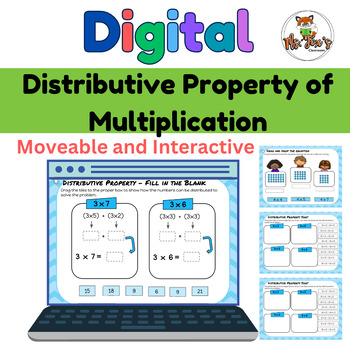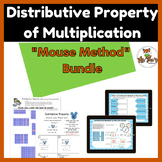Digital Distributive Property of Multiplication - Interactive and Moveable
- PDF
- Google Apps™
- Internet Activities

What educators are saying
Also included in
- The distributive property of multiplication state that multiplying two factors together gives the same result as breaking one factor into two addends, multiplying both addends with the remaining factor, then adding both products together.Why not make this fun and make a connection with mouse ears. LPrice $6.50Original Price $8.19Save $1.69
Description
Help your students understand the Distributive Property of Multiplication with a low prep and easy to assign digital product that uses Google Slides™ . This can be used with or without the use of Google Classroom™.
There are 18 fun and engaging slides that incorporate interactive moveable pieces. Slides are scaffolded from arrays to breaking apart a factor into two addends, then multiplying the addends with the remaining factor. The answer key is included in this resource.
This digital product incorporates arrows and moveable pieces so students can show their understanding of how The Distributive Property of Multiplication works to help solve challenging problems.
Directions on how to assign the slides are included. This is a great product to use for math stations, e-learning or direct teaching.
Students move the pieces in the editing mode of Google Slides™ and then share their answers with their teacher either in Google Classroom™ or by sharing their link.
I welcome all feedback and please follow my store as I will be offering more digital products in the future.
Tip:
If you purchase this product, leave a review to earn TpT credits! Credits allow you to save money when buying other awesome products.



